How AI Predicts Plant Disease Outbreaks
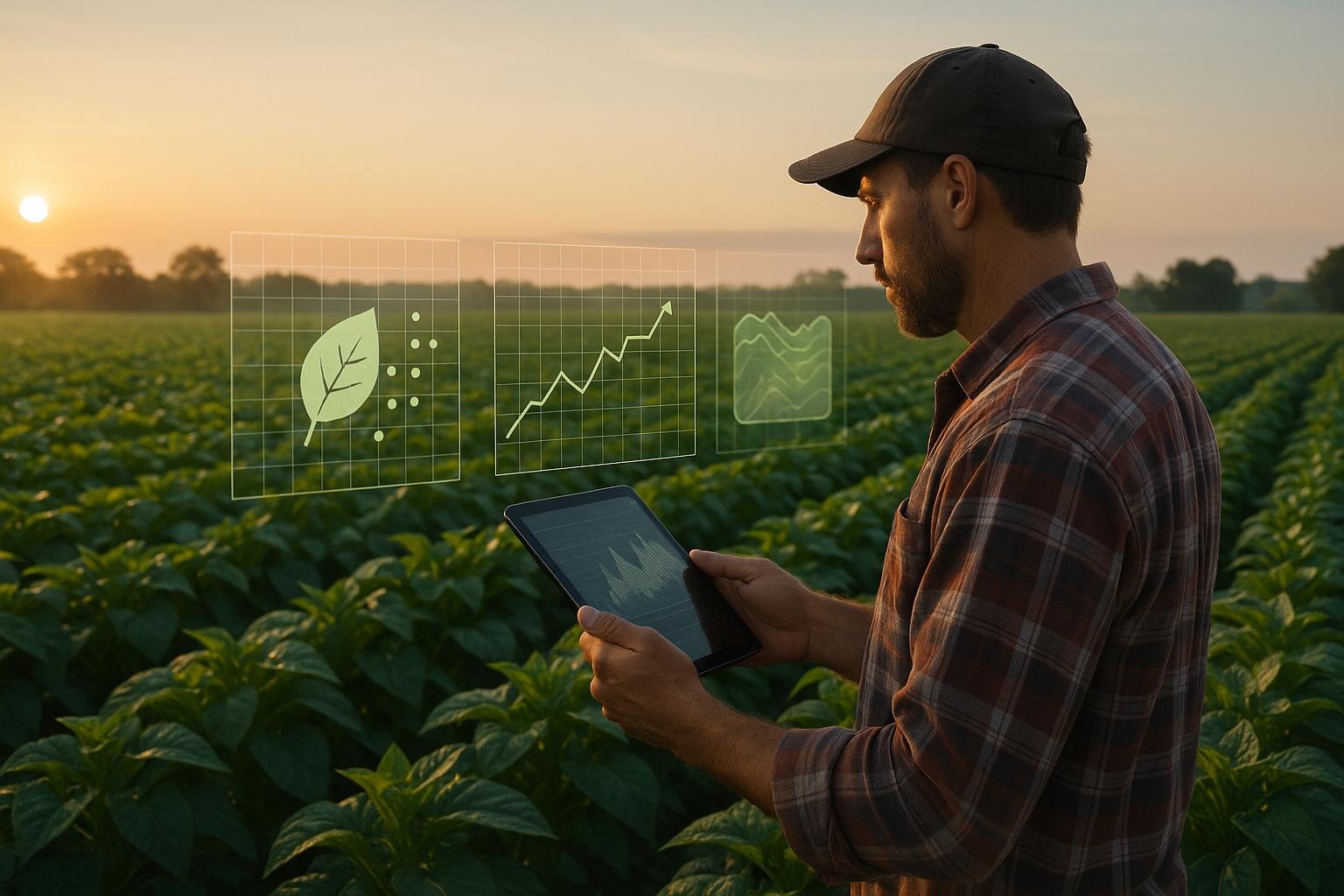
AI is transforming agriculture by predicting plant diseases before symptoms appear, helping farmers save crops and reduce losses. Here's how it works:
- AI Models: Tools like CNNs and Vision Transformers analyze plant images, weather data, and historical trends to detect risks with up to 99% accuracy.
- Data Sources: AI relies on RGB images, weather sensors, and disease records. Drones and satellites collect large-scale data, while datasets like PlantVillage provide over 54,000 plant images for training.
- Climate Challenges: Rising temperatures and changing rainfall patterns increase disease risks. AI helps farmers respond by identifying optimal planting times and disease-resistant crops.
- Benefits: Farmers save money, reduce pesticide use, and improve crop health. For instance, wheat growers save $22 per acre using weather-based models.
AI-powered tools are already helping farmers worldwide by offering early warnings, risk maps, and tailored advice for local conditions. These advancements are making farming smarter and more efficient.
Using AI to Identify Plant Disease, Track Insect Infestations, and Improve Food Security

Data Sources for AI Disease Prediction
AI-based disease prediction depends on three key types of data, each playing a vital role in building accurate forecasting models. Together, these data sources allow AI systems to pinpoint when and where plant diseases are likely to occur.
Image Data for Disease Detection
Visual data is at the heart of AI models, capturing early signs of plant diseases. RGB images, which are standard color photographs, are widely used because they’re simple to collect and process. These images reveal visible symptoms on leaves, stems, and fruits, helping AI systems detect diseases early.
Researchers have built extensive image datasets in various ways. For example, Ma and colleagues collected 14,208 images from cucumber fields to train deep learning models. Similarly, Fuentes and team gathered 8,927 images of tomato plants in real-world conditions. The PlantVillage dataset is one of the largest resources, featuring over 54,000 images across multiple crops [3].
Images are collected using tools ranging from smartphones and digital cameras to drones, aircraft, and satellites [2]. Drones, in particular, can quickly cover large areas and capture high-resolution images, making them ideal for identifying fieldwide disease patterns.
In addition to RGB images, advanced imaging technologies like hyperspectral, multispectral, thermal, and depth imaging can detect diseases that aren’t visible to the naked eye [2]. For instance, Jin and colleagues used hyperspectral imaging to analyze 10,784 maize images, capturing wavelengths beyond standard cameras’ capabilities [3]. Data augmentation techniques are also used to expand datasets by creating variations of existing images. For example, Haque and team transformed 3,310 litchi leaf images into more than 9,930 augmented versions through rotation, scaling, and color adjustments [3].
Next, weather data provides the environmental context that is essential for accurate disease prediction.
Weather Data and Sensor Information
Weather conditions are a major factor in plant disease outbreaks. Variables like temperature, humidity, rainfall, and leaf wetness duration create the perfect environment for pathogens to thrive and spread.
Automated weather stations (AWSs) equipped with sensors are among the most reliable sources of weather data for disease prediction models [4]. These stations collect data every 15 minutes, capturing rapid environmental changes that might trigger disease outbreaks. A classic example is the TOM-CAST system from the late 1980s in southern Ontario, which demonstrated the importance of frequent weather updates in disease forecasting [6].
Today, networks of weather stations are widespread. For instance, a consortium of farm-management companies operates more than 2,000 automated weather stations across the western United States, covering states like California, Oregon, and Arizona. These stations transmit data every 15 minutes to central hubs, where regional risk maps for pests and diseases are generated [6]. Companies like SkyBit Inc. also gather data from hundreds of public weather stations across North America, offering subscribers localized weather estimates and pest risk assessments for a monthly fee [6].
Satellites add another layer of monitoring by measuring variables like leaf wetness duration, which local stations often miss [4]. This combination of ground-based and satellite data ensures comprehensive weather coverage.
Farmers benefit significantly from these systems. For instance, wheat growers save about $22 per acre by using weather-based models to time treatments more effectively [5].
Historical and Regional Disease Records
Historical records of past disease outbreaks are crucial for training AI models to identify patterns and predict future risks. These records help AI systems understand how diseases behave in specific regions and under certain environmental conditions.
Several datasets provide valuable historical disease information. The PlantVillage dataset, for example, includes images of healthy and diseased leaves across various plant species, serving as a benchmark for model training [1]. Other resources like New Plant Diseases, IPM Images & APS Images, Plant Doc, and the Plant Leaf Dataset (PLD) are also widely used [1].
Regional data is especially important. AI models need to account for local climate and geography to provide accurate predictions. A model trained on data from humid coastal areas might not perform well in dry inland regions, underscoring the importance of tailoring predictions to regional conditions.
| Dataset | Crop Focus | Image Count | Collection Method |
|---|---|---|---|
| PlantVillage | Multiple (14 crops) | Comprehensive | Mixed sources |
| Ma et al. | Cucumber | 14,208 | Field acquired |
| Fuentes et al. | Tomato | 8,927 | Field acquired |
| Rao et al. | Mango/Grapes | 8,438 | PlantVillage + Field |
How AI Predicts Plant Disease Outbreaks: Step-by-Step Process
AI's ability to turn raw data into reliable disease predictions involves a detailed, multi-phase workflow. Here's how these steps come together to provide actionable insights for farmers and gardeners.
Data Collection and Processing
The journey begins with gathering high-quality field images, including photos of both healthy and diseased plants. These images form the backbone of comprehensive datasets. Once collected, the data undergoes preprocessing to remove noise and standardize lighting and formats, ensuring uniformity [1].
Next comes image segmentation, which isolates diseased regions from healthy tissue, making it easier for AI to focus on the problem areas [1]. Finally, feature extraction identifies critical visual traits - like shape, color, texture, and patterns - that are essential for recognizing specific diseases [1]. These extracted features become the building blocks for algorithms to detect and predict diseases accurately.
In addition to image data, weather information plays a vital role in boosting prediction accuracy. With clean and segmented data, AI models move on to uncovering complex disease patterns.
Pattern Recognition with AI Algorithms
Machine learning and deep learning models analyze the processed data to detect intricate patterns linked to disease risks. Convolutional Neural Networks (CNNs), along with models like Random Forest and Deep Convolutional Neural Networks (DCNN) paired with Bayesian learning, consistently demonstrate accuracy rates ranging from 87% to 98.9% in distinguishing healthy plants from diseased ones [1] [2].
These algorithms go beyond just analyzing plant images. They also process large datasets of environmental factors, weather trends, and historical outbreak records. This allows for early detection, often before any visible symptoms appear, by identifying conditions that typically lead to disease outbreaks.
Creating Disease Risk Maps
Once disease patterns are identified, AI translates this data into visual risk maps, offering farmers actionable insights. By integrating geolocation data, AI systems create heat maps that highlight areas with varying levels of disease risk [9].
HSAT’s "Inference" platform exemplifies this approach, achieving over 90% accuracy in disease detection [9]. Rob Weston, the founder of HSAT, emphasizes the broader implications of this technology:
"By leveraging AI for crop prediction and disease detection, farmers, producers, and traders can gain a global view of crop health, identify areas of poor irrigation, and create regional and national risk maps." [9]
One practical application of this technology is the cassava disease management solution developed by PlantVillage and IITA. Deployed in 2018 through the Nuru app, it has helped farmers in Tanzania manage crop diseases effectively [10].
These risk maps are constantly updated as new data becomes available, ensuring farmers have access to the latest information on disease risks. By 2025, it's projected that more than 60% of farmers worldwide will rely on AI-powered apps for early disease diagnosis [8].
| AI Algorithm | Crop Focus | Accuracy Rate | Key Advantage |
|---|---|---|---|
| CNN Model | Tomato/Apple | 87% | Excels at visual pattern recognition |
| Random Forest | Tomato | 94% | Strong performance in machine learning |
| DCNN with Bayesian | Potato/Tomato/Pepper | 98.9% | Avoids overfitting problems |
| VGG-16 | Rice | 92.24% | Efficient deep learning model |
Integrating these AI-generated risk maps into farm management systems allows for quick action on recommendations. Farmers can also share this data to support regional surveillance, ultimately benefiting entire agricultural communities.
sbb-itb-4d6a8dd
🚀 Ready to Reinvent Your Garden?
Join thousands of homeowners who have transformed their gardens using our AI design tool. Upload one photo to explore endless possibilities.
Get your AI garden designs →AI Applications in Regional Disease Mapping
AI has become a game-changer in regional disease mapping, offering farmers and gardeners across the United States tools to make smarter decisions. By creating detailed maps that highlight plant disease risks, these technologies help users take proactive steps to protect their crops.
Tailoring AI to Local Climate and Geography
One of AI's standout abilities is analyzing how local factors - like weather, soil, and historical disease trends - interact across different regions in the U.S. Machine learning uncovers patterns that might otherwise go unnoticed, making it easier to address the unique challenges posed by America’s diverse climates [12]. For instance, the humid Southeast has vastly different agricultural needs compared to the arid Southwest.
In the Western U.S., AI-driven techniques like dynamical-generative downscaling have made significant strides in reducing forecasting errors. These methods have cut fine-scale inaccuracies by over 40%, while also improving predictions for extreme summer heat and winter precipitation by 20% and 10%, respectively [11].
AI systems combine meteorological data, topography, and historical disease records to predict how local conditions influence plant diseases. For example, the Pacific Northwest, with its wet winters and dry summers, faces very different disease pressures compared to the hot, humid environments of Florida or Texas. These models are incredibly accurate, achieving over 95% success in disease detection and forecasting outbreak risks with 81–95% precision weeks in advance [12]. Such insights allow for localized strategies that are tailored to specific regional climates.
Early Warning Systems for Farmers and Gardeners
Thanks to these detailed maps, AI-powered early warning systems can now provide real-time alerts, often before any visible symptoms appear. These systems rely on a mix of real-time weather updates, satellite imagery, and sensor data to monitor conditions across different regions.
Take, for example, the PlantVillage mobile app used by farmers in Kenya. This AI-powered tool has helped reduce crop losses by 30% by offering immediate, actionable advice on potential diseases [13]. Closer to home, California’s FarmSense startup uses AI and IoT sensors to monitor vineyards, cutting pesticide use by 40% [13].
What makes these systems so effective is their ability to process and combine multiple data sources with high accuracy. This precise approach not only provides timely alerts but also offers actionable recommendations. Farmers and gardeners using these tools have reported a 20–40% reduction in pesticide use [13], leading to lower costs and a smaller environmental footprint.
AIGardenPlanner’s Impact on Plant Management
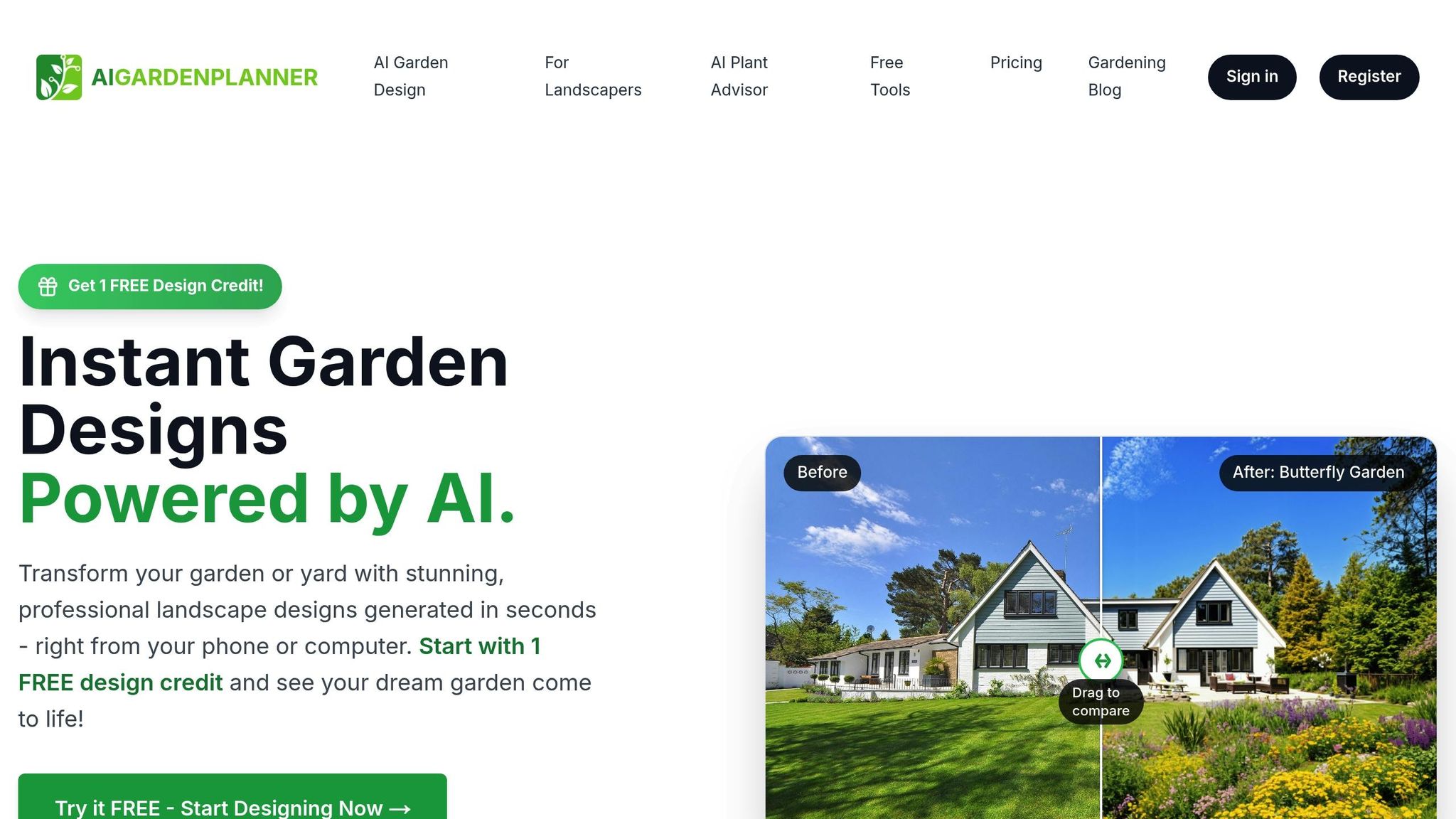
AI isn’t just for large-scale farming - it’s also making waves in home gardening. Tools like AIGardenPlanner bring AI-driven insights to small-scale growers, offering localized advice that makes everyday gardening more efficient and productive.
One of the platform’s standout features, the AI Plant Advisor, analyzes local climate, seasonal disease trends, and regional challenges to recommend plants that are better suited to specific areas. It also provides detailed growing guides that highlight periods of high disease risk. For instance, a gardener in the Southeast might receive advice tailored to the region’s humid conditions, while someone in the Southwest gets recommendations designed for a drier climate.
Challenges and Future Directions in AI Disease Prediction
AI has made strides in predicting plant disease outbreaks, but significant challenges remain. By addressing these obstacles and exploring potential solutions, we can better understand the path forward for this technology.
Tackling Data Gaps and Quality Problems
One major challenge is the uneven quality and availability of data across different regions and crops. Plant disease identification often lacks consistent reference sets for training AI models [14]. For instance, while herbaria worldwide housed an estimated 392,353,689 plant specimens as of December 2019 [14], much of this data is fragmented, difficult to access, or restricted by institutional barriers. This limits the development of comprehensive models that work across diverse geographic areas.
Applying FAIR principles - making data findable, accessible, interoperable, and reusable - could help address these issues. Setting clear guidelines for data collection and standardizing procedures for sharing information would go a long way in bridging these gaps. Improving documentation practices, such as maintaining detailed records of material origins and analytical workflows, is also critical for validating and reproducing AI models. Investments in targeted data services and expanding ground truth datasets are equally important steps to strengthen AI's role in plant health research [14]. These efforts are vital for creating models that can adapt to a variety of conditions.
Improving Model Scalability and Accessibility
Another hurdle is the ability of AI models to adapt to different regional climates and agricultural practices. Techniques like transfer learning and hybrid approaches can help models perform better across diverse environments [7]. For example, a SECNN model demonstrated 98.63% accuracy in classifying chili leaf diseases, which increased to 99.12% with data augmentation [1].
Edge AI offers a promising solution for accessibility. By running AI models directly on devices like smartphones, tablets, and drones, users can access real-time disease predictions without needing constant internet connectivity - an especially valuable feature for rural areas. Lightweight models optimized for mobile devices, paired with user-friendly interfaces, can empower growers of all scales, from backyard gardeners to large commercial farmers, with reliable plant disease prediction tools [2]. Tools like AIGardenPlanner are already taking steps in this direction, offering localized, real-time insights.
What’s Next for AI in Plant Health?
With improvements in data quality and model scalability, the next generation of AI systems holds even greater potential. Hybrid CNN-ViT models and multi-modal data fusion are expected to take adaptability and early detection to the next level [2].
Multi-modal systems will combine data from UAV imagery, satellite sensors, soil metrics, and environmental readings to create a more complete picture of plant health. These systems could even detect diseases before symptoms are visible by analyzing subtle changes in plant metabolism and environmental conditions [2].
Federated learning and IoT integration will make real-time monitoring possible while ensuring data privacy. AI-powered auto-annotation tools are also reducing the time and effort needed to label large datasets, speeding up the training process for new models [2]. Additionally, ongoing work to improve model performance under challenging lighting and weather conditions will make these tools more practical for real-world agricultural use.
These advancements are set to make AI disease prediction not only more precise but also more accessible to farmers and gardeners across the United States and beyond.
Conclusion
AI has revolutionized plant disease prediction, offering faster and more precise results than ever before. What started as basic pattern recognition has evolved into advanced systems capable of forecasting disease outbreaks weeks in advance with an impressive accuracy range of 81–95% [12]. This leap forward isn't just about technological progress - it's a practical response to the global issue of plant diseases, which account for 10–16% of crop losses worldwide each year [12].
Key Takeaways
AI's impact on agriculture is undeniable, with recent models achieving over 99% accuracy during testing - far exceeding the capabilities of traditional human visual assessments [12][1]. These systems can process images and provide diagnostic results in mere seconds [15], a stark contrast to the lengthy hours or days required by older methods.
Localized insights play a crucial role in enhancing AI predictions. For example, tools like AIGardenPlanner deliver tailored recommendations based on local climate and conditions, ensuring gardeners and landscapers receive advice specific to their geographic areas.
Perhaps most transformative is AI's ability to detect diseases before visible symptoms appear [15]. This shift from reactive to proactive plant health management enables more targeted treatments, reducing pesticide use while improving plant survival rates.
The Future of AI in Agriculture
AI's role in agriculture is set to expand even further, integrating advanced sensing technologies and real-time data processing. Karen Garrett, a plant pathologist at the University of Florida, highlights the broader potential of AI:
"For crop resiliency, AI can help by making better tools for crop surveillance, designing better robots to deliver pesticides or harvest, and better software to help in breeding for traits like disease resistance and drought tolerance." [16]
Emerging technologies promise greater scalability and connectivity. Multi-modal systems that combine satellite imagery, weather data, and IoT sensors are creating robust monitoring networks to safeguard entire agricultural regions.
For gardeners and landscapers, adopting AI-powered tools that align with local conditions offers a pathway to optimize resources, lower chemical usage, and enhance plant health. The challenge lies in selecting solutions that adapt to the diverse growing environments across the United States, ensuring practical and effective results.
FAQs
How does AI use advanced imaging to detect plant diseases that are hard to see with the naked eye?
AI uses cutting-edge imaging technologies - such as thermal, multispectral, fluorescence, hyperspectral, and visible light imaging - to spot plant diseases that are often invisible to the naked eye. These tools pick up on subtle shifts in plants, like changes in temperature, color, or how they reflect light, signaling early signs of stress or infection.
By analyzing these patterns, AI can identify diseases at an early stage, giving gardeners and growers the chance to act quickly and prevent the problem from spreading.
How does AI use weather data to predict plant disease outbreaks, and how does this help farmers?
AI uses weather data - including temperature, humidity, and rainfall - to predict plant disease outbreaks. These factors influence the conditions that can trigger the spread of certain diseases, and AI models process this information to identify when and where outbreaks are most likely to happen.
For farmers, these predictions are game-changing. They enable early interventions, like applying targeted treatments or taking preventive steps, which minimizes the reliance on broad pesticide use. This approach not only safeguards crops and boosts yields but also conserves time and resources, leading to healthier plants and more efficient farming methods.
What challenges does AI face in predicting plant diseases, and how are researchers improving its accuracy and usability?
AI encounters a variety of hurdles when it comes to predicting plant diseases. Challenges like changing environmental conditions, incomplete or noisy data, and restricted access to diverse datasets can all impact the reliability and scalability of AI models.
To tackle these problems, researchers are turning to advanced methods such as image analysis, sensor-based data collection, and explainable AI. They're also working on building larger, more varied datasets to enhance the accuracy and usability of these tools. The goal is to create AI solutions that are not only precise but also practical for both scientists and everyday gardeners.
🎨 Visualize Your Dream Garden Today!
Transform any outdoor space into a professional landscape design in minutes. Just upload a photo, choose your style, and let our AI do the rest.
Start your garden transformation now →Related posts
Related Articles
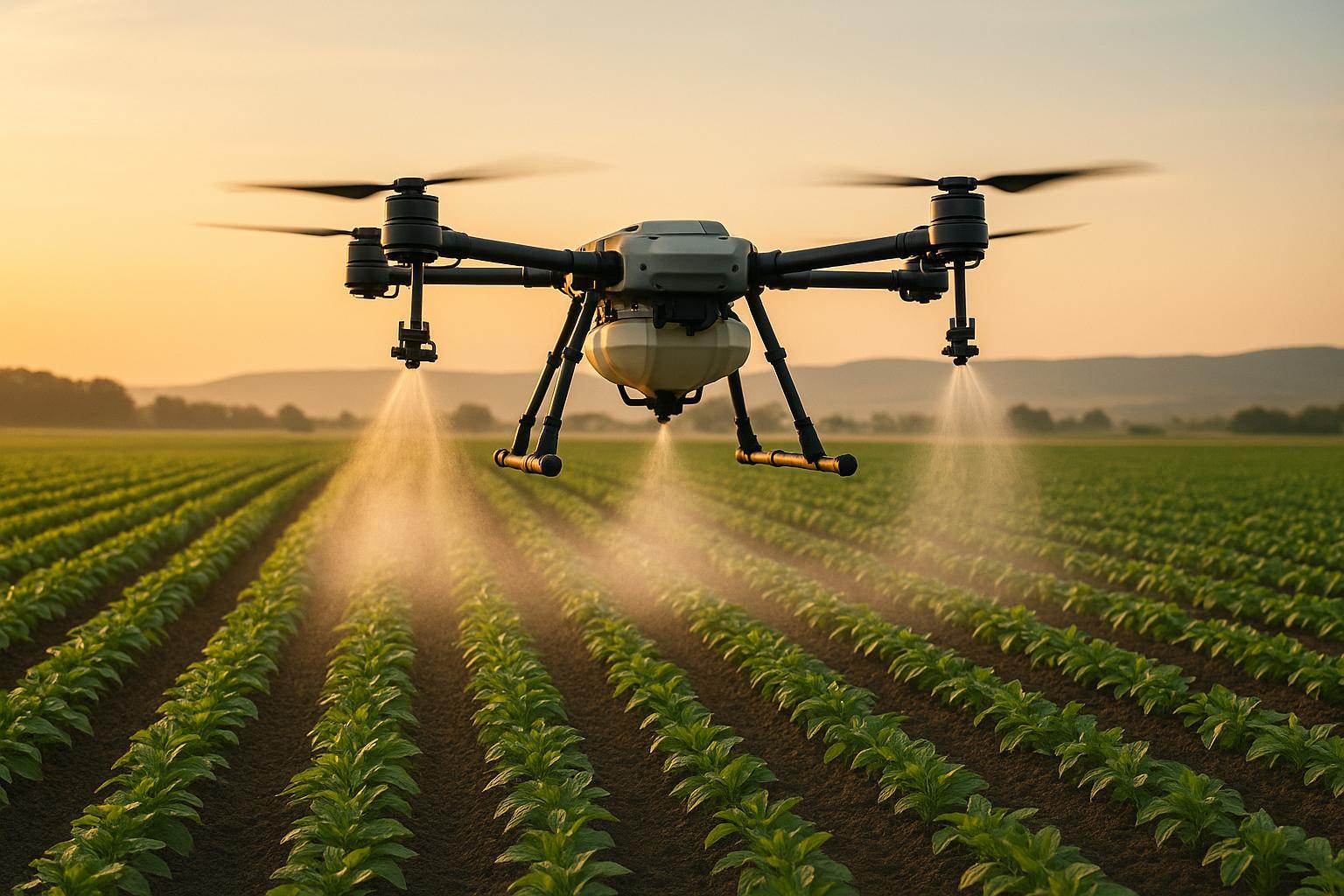
Precision Spraying: AI Drift Reduction Tips
Explore how AI technology enhances precision spraying in agriculture, reducing pesticide drift and improving efficiency for sustainable farming.
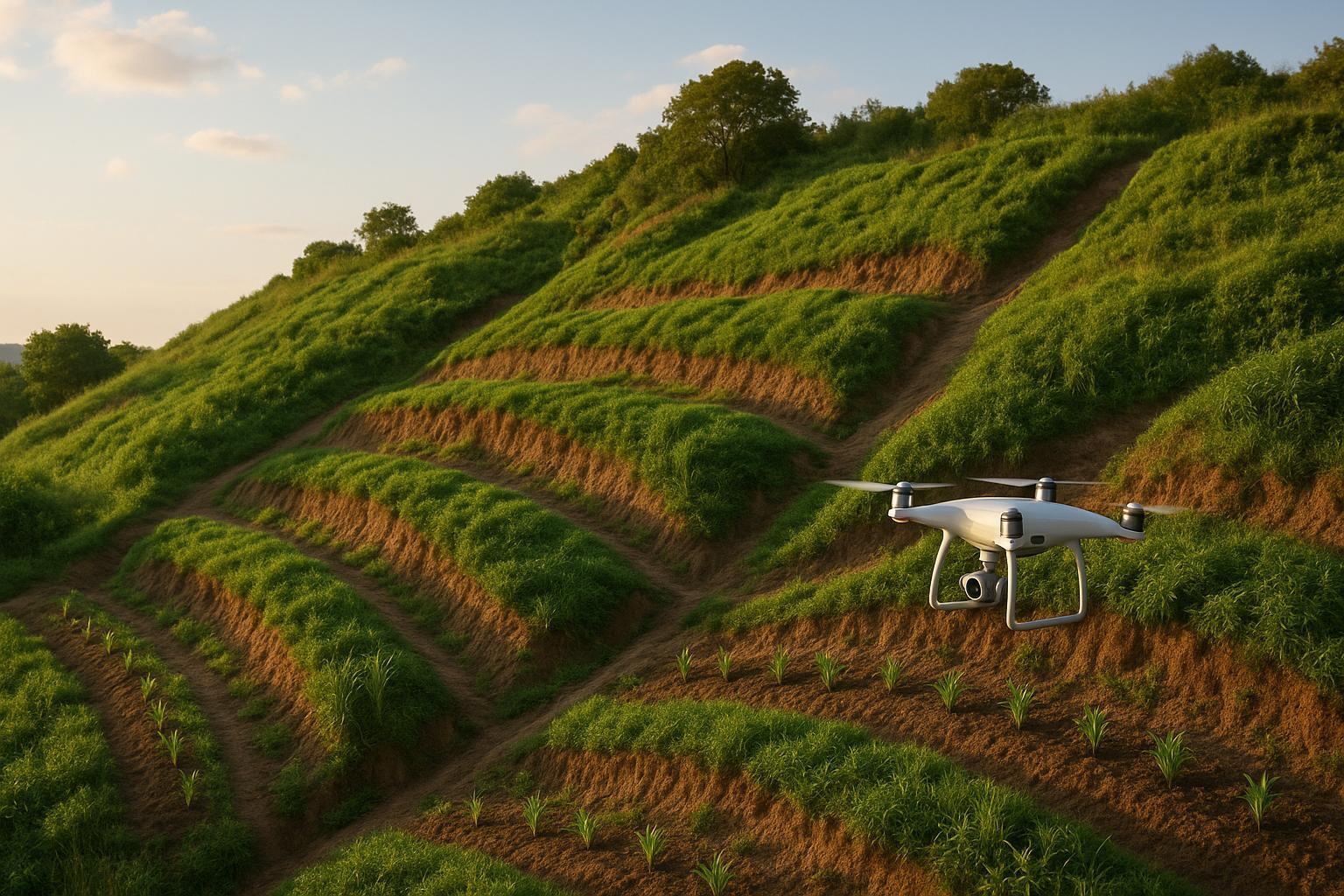
AI Tools for Soil Erosion Control
Explore how AI tools are revolutionizing soil erosion control with real-time monitoring, mapping, and tailored strategies for effective land management.
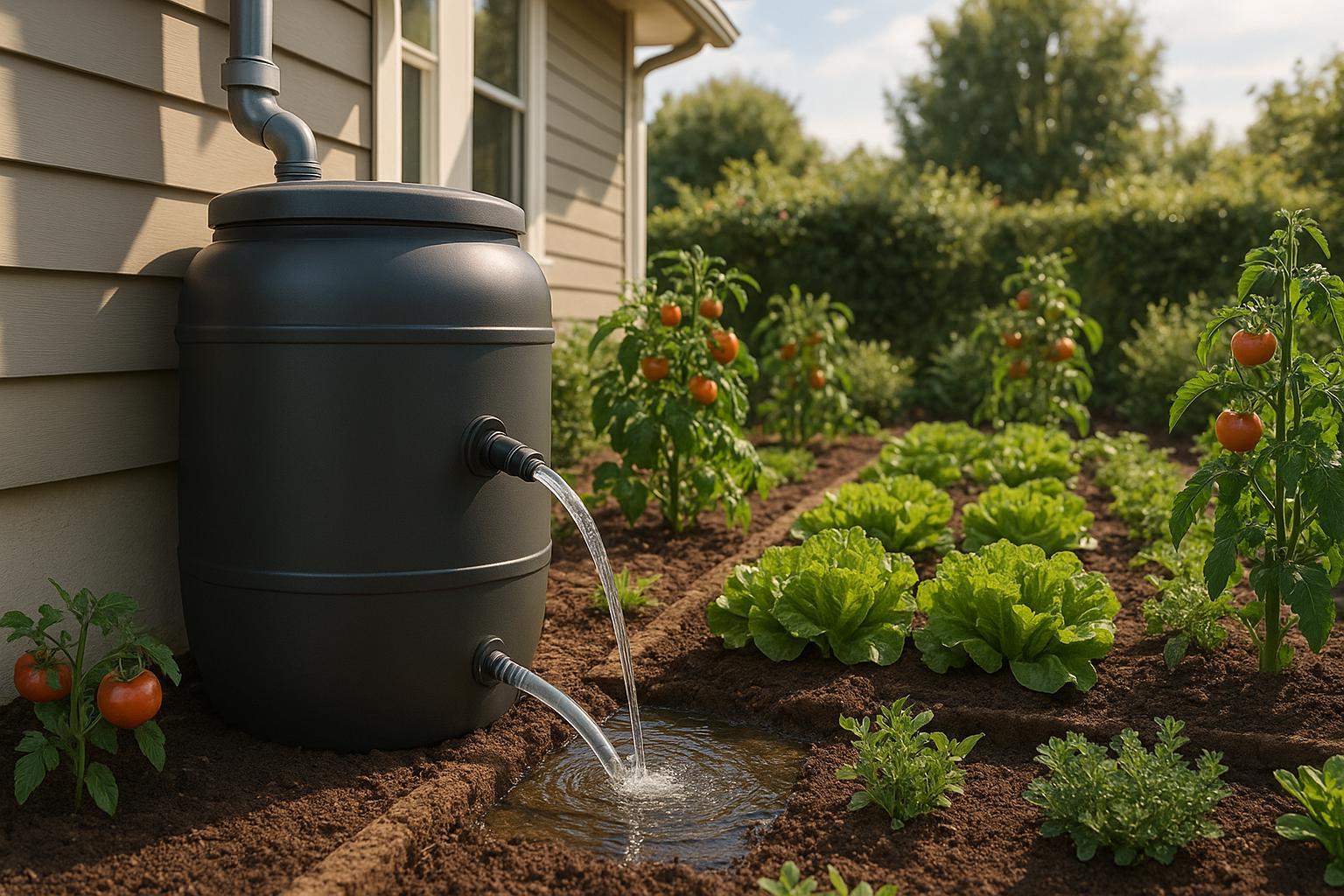
Ultimate Guide to Rainwater Filtration for Gardens
Learn how to implement an effective rainwater filtration system for your garden, enhancing plant growth while conserving water and reducing costs.
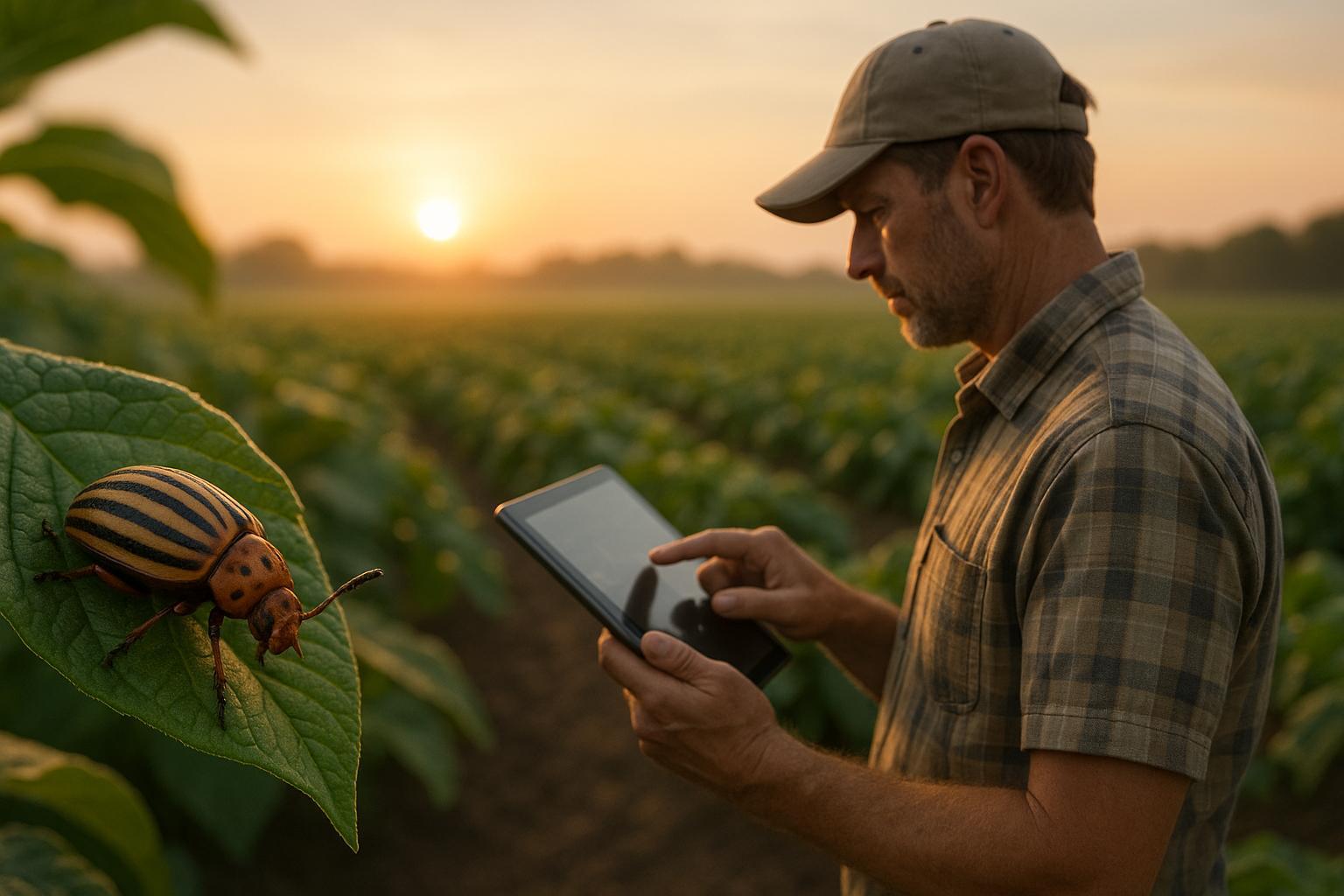
AI Pest Identification vs. Traditional Methods
Explore how AI pest identification outperforms traditional methods by enhancing accuracy, speed, and environmental sustainability in pest management.
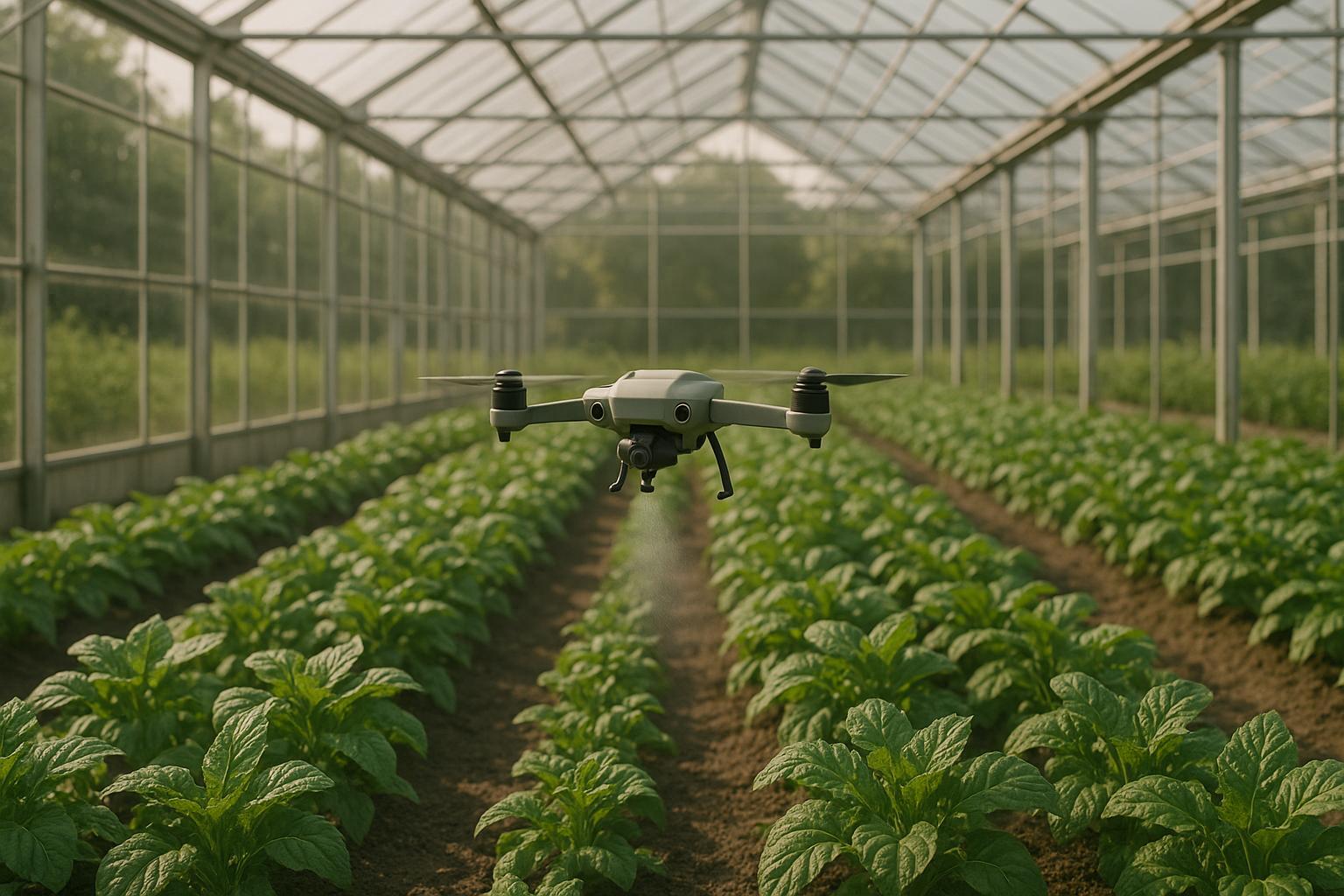
AI Pest Control: Benefits vs. Costs
Explore how AI pest control systems enhance pest management with precision, reduce costs, and minimize environmental impact.

Transform Your Bathroom: A Step-by-Step Guide to Removing a Garden Tub
Learn how to free up space, enhance the aesthetic appeal, and improve functionality by removing a garden tub in your bathroom. Follow this detailed guide for a successful renovation project.